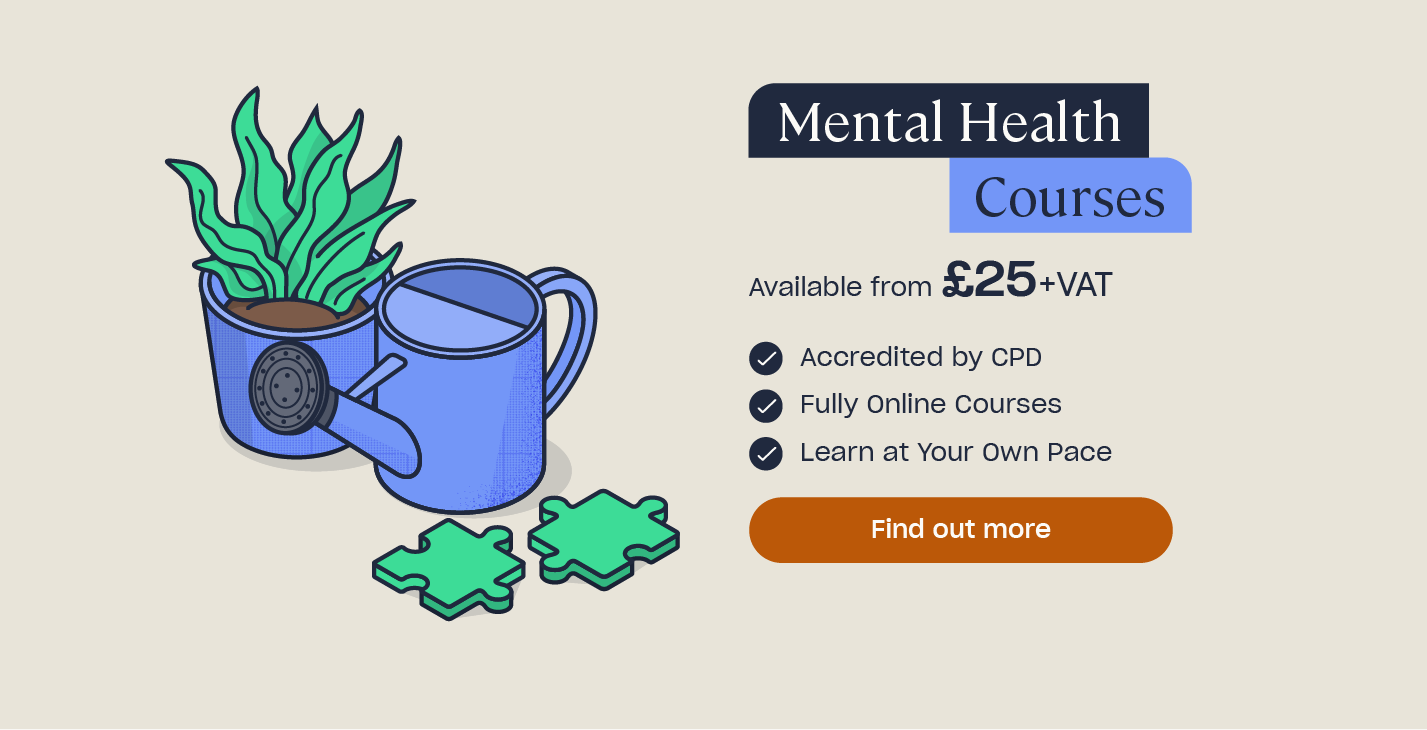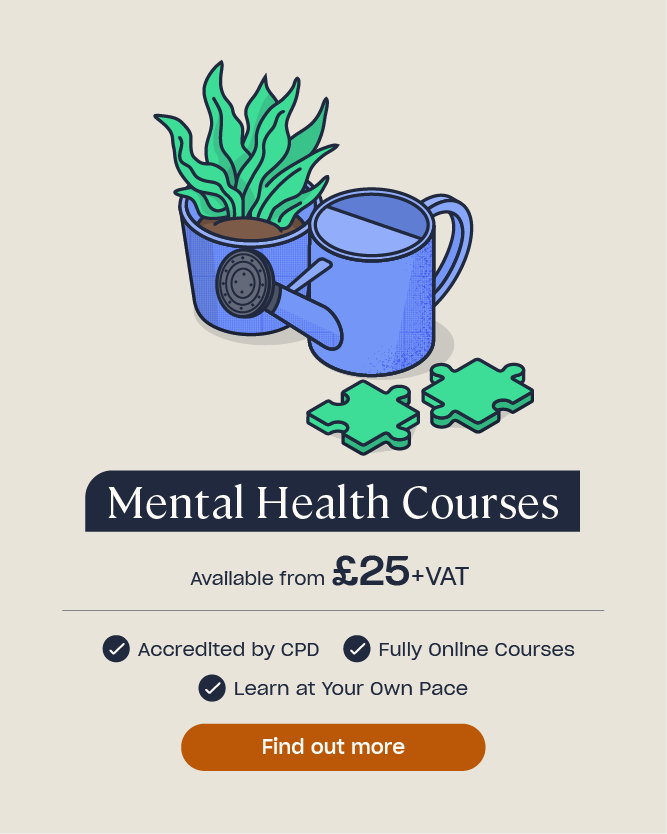How to Deal with Anxiety at Work
With anxiety being the central theme of this year’s Mental Health Awareness week (15th to the 21st May), it’s important to be aware of what anxiety is and how it can impact your daily life, particularly in the workplace. Although anxiety is experienced by everybody in times of worry or stress, these unpleasant feelings can build up into disorders and phobias that are hard to control and can severely impact your daily life.
In 2021/2 anxiety contributed to 51% of all work-related ill health cases. Whilst this is a concerning figure, it highlights that raising awareness of how to manage anxiety should be a top priority in every workplace.
In this article, we will provide a definition of anxiety and examine the types of workplace anxiety and their symptoms. We’ll also delve into the effects that these can have on daily life at work, and share methods of managing anxiety to help ameliorate its impact.
Managing Anxiety at Work: Why is it Important?
Anxiety can be defined as a feeling of unease, such as worry or fear, that can be mild or severe. Experiencing anxiety is a normal part of life and can naturally occur at work in scenarios such as preparing for a job interview or presentation.
People with anxiety disorders, however, have intense and persistent worry or fear about everyday events, such as interactions with co-workers, that can quickly reach an uncontrollable level and consistently impact their daily life.

Whilst anxiety at work can often feel unmanageable, its symptoms can be effectively controlled. It’s important to manage your anxiety as, if left untreated, it can have a huge impact on you and your career; For example, you may fall behind in your current position or start to let your anxiety influence important decisions, such as choosing to turn down opportunities and promotions due to fear around the new responsibilities they would involve.
The first step in managing your anxiety is to start tracking the moments in your work day that cause the most anxiety, as this will help you discover what your triggers are. Being able to put a name to the feelings you’re experiencing can often be a great help in discovering treatments to help manage your symptoms.
Looking to Learn More?
Our Anxiety Quiz will help you to test your current knowledge of anxiety and start filling in any gaps in your awareness. The quiz also provides some useful tips on how to tackle anxiety, as well as what to avoid.
Types of Work Anxiety
There are several types of anxiety disorders; having an awareness of the signs and symptoms of each will enable you to better identify the specific anxiety felt by yourself or those around you, and help you to understand how to provide support. Here are just a few of the most common anxiety disorders experienced by people at work.
Generalised Anxiety Disorder
Generalised anxiety disorder (GAD) usually presents itself as a persistent feeling of dread which can interfere with your daily life. Differently to occasionally worrying about significant events, people with GAD experience frequent anxiety that is often out of proportion with the impact of the things they’re worried about. Symptoms of generalised anxiety disorder include:
- Feeling restless or ‘on edge’.
- Being easily fatigued.
- Irritability.
- Having headaches, or unexplained tension or pains in your muscles or stomach.
- Having trouble sleeping.
- Difficulty controlling feelings of worry.
In the workplace, GAD may manifest itself in an increased feeling of tiredness which makes it difficult to concentrate on your core work tasks. As a result, you may find that you’re missing more deadlines and producing lower quality content. Additionally, GAD may cause you to take more time off work due to an increased number of headaches and general physical discomfort.
Panic Disorder
People with a panic disorder can experience frequent and unexpected panic attacks, involving intense fear and a feeling of losing control despite a lack of danger or a trigger. During a panic attack, your symptoms may be:
- A racing heartbeat.
- Sweating.
- Trembling or shaking.
- Pain in your chest area.
- Feelings of impending doom or lack of control.
It’s important to note that not everyone who has experienced a panic attack will have a panic disorder. However, if you frequently experience unexpected panic attacks and find yourself worrying about when the next one will occur, it may be wise to seek further medical advice.
Having a panic disorder can make the workplace a very scary place to be as incessantly worrying about a future panic attack can make it difficult to focus on completing work tasks. You may find yourself feeling detached from reality and therefore unable to contribute to group discussions or interactions with co-workers. Additionally, many people suffering from panic disorders find it difficult to do tasks that require fine motor skills, such as writing or typing, due to excessive shaking.

Social Anxiety Disorder
Social anxiety is a very common type of anxiety disorder that is often mistaken for extreme shyness. A person with social anxiety disorder feels intensely worried about being scrutinised or judged in social situations, particularly when speaking in public, meeting new people, or being interviewed. In social situations, or ones where they’re asked to ‘perform’, people with social anxiety often:
- Blush or sweat excessively.
- Feel their mind going blank.
- Have a rigid or tense body posture.
- Find it difficult to make or maintain eye contact.
- Experience an increased or irregular heart rate.
Being at work often requires many interactions throughout the day with colleagues and superiors. This can be extremely difficult for someone with social anxiety due to the fear surrounding interpersonal interactions, and therefore it’s common to avoid these circumstances, resulting in increased absenteeism. Social anxiety may also get in the way of achieving promotions or taking on new opportunities, as the social and performative interactions that accompany these events, such as interviews, are too anxiety-inducing to attend.
Obsessive Compulsive Disorder (OCD)
OCD and anxiety disorders have many overlapping symptoms, and are therefore often considered to be connected. OCD is a chronic disorder in which people have uncontrollable obsessions or compulsions that they feel a strong urge to act on and repeat over and over. Some compulsions that people may experience include:
- Excessive cleaning or hand washing.
- Arranging things in a very particular manner.
- Repeatedly checking things, such as that the door is locked or the oven is off.
- Compulsive counting.

Generally, a person with OCD is unable to control these thoughts and behaviours, even when they realise they’re excessive, and they spend at least an hour a day on these rituals despite feeling a lack of pleasure performing them.
This can have a huge impact on your work life as it’s extremely difficult to focus on a task when you’re constantly trying to battle compulsive thoughts, resulting in it taking longer to complete work. Similarly, it may take time for someone with an OCD to move on from a task as they feel a need to complete their repeated checks before starting something new, and this can take hours.
Phobias
A phobia is an intense fear of an object or situation which causes high-level anxiety and terror that is out of proportion with the danger surrounding the event. Someone with a phobia is likely to:
- Have irrational but excessive worry about encountering a specific object or scenario.
- Actively avoid the feared object or situation.
- Experience immediate and intense anxiety when encountering the feared object or situation.
Whilst having a phobia to something that is rarely encountered, such as clowns or needles, can be managed relatively easily, someone with a commonplace phobia can find it severely impacting their daily life.
Certain common phobias such as heights, enclosed spaces, or crowds are likely to be frequently encountered in a work environment. Research shows that people with intense phobias find career progression difficult and struggle to perform in interviews or in pay-rise discussions. Additionally, they are absent from work far more often due to feeling unable to tackle their fears and opting to avoid them instead. Despite this, only 2% of phobia sufferers have discussed their fears with HR, and as few as 7% have chosen to disclose their issues with their manager.
Although this list is not exhaustive, it gives an idea of some of the most prevalent types of anxiety that may be present in the workplace and greatly impact a sufferer’s ability to thrive at work.

How to Calm Anxiety at Work
Despite anxiety often resulting in a feeling of not being in control, there are many ways to help manage your anxiety at work. Although anxiety may be severely impacting your ability to work at the moment, you may find these strategies useful to getting back on track:
Take breaks when you need to
Stepping away from your work and the workplace environment to clear your head can help to refresh your mindset and help you to refocus. Try using deep-breathing techniques, go for a walk (preferably in nature), or take a holiday for a proper break away.
Open up
Understandably, asking for help at work can feel difficult. Many cases of ill mental health aren’t reported to HR or managers and therefore can go under the radar. Discussing your anxiety with someone you trust at work and having someone who understands what you’re experiencing can be comforting and help ease some of its symptoms. Read our article on How to Talk about Mental Health to get some tips on how to start these difficult conversations.

Adopt healthy habits
Self care is essential to managing anxiety, as not looking after yourself can compound your symptoms. Getting enough sleep, eating healthily, and exercising are proven to have a hugely positive impact on the mind as well as improving physical health.
Plan your work
Take time to plan out the upcoming week so that you know what’s coming in terms of workload. This will help to give you a sense of control over your time which can ease feelings of anxiety. Additionally, breaking tasks down into smaller chunks can make them seem less overwhelming and more easily managed.
Get professional help
If your anxiety symptoms aren’t eased by any of the above and you find that you’re still struggling with your daily activities at work, a GP or mental health specialist will be able to provide access to treatment, whether that be therapy to help identify coping mechanisms, or medication.
The more we understand about anxiety, the better we will be at tackling its symptoms. Being aware of how, when, and where your mental health might suffer is vital to being able to manage your own anxiety, and provide effective support for others experiencing it. Our Mental Health Awareness course provides a wealth of information to further your understanding.

Anxiety is an emotion that is experienced by everyone, but if your anxiety is becoming a perpetual and overwhelming feeling that affects your daily life and holds you back at work, you may be experiencing an anxiety disorder. Identifying which type of anxiety you have can be helpful to begin understanding your symptoms. There are many ways of helping to ease your anxiety at work, including making your co-workers aware of your issues. If you’re still struggling, it’s important to seek professional help. Don’t suffer in silence.
Further Resources:
- Anxiety Quiz
- How to Talk About Mental Health
- Stress Management Activities to Try at Home
- How to Manage Stress at Work
- Workplace Health & Wellbeing Quiz
- How to Support Hidden Disabilities in the Workplace
- What To Do If You Suspect Mental Health Discrimination at Work
- Rest Breaks at Work: What are the Requirements?
- Mental Health Awareness Training Course
- Mental Health Training for Managers











